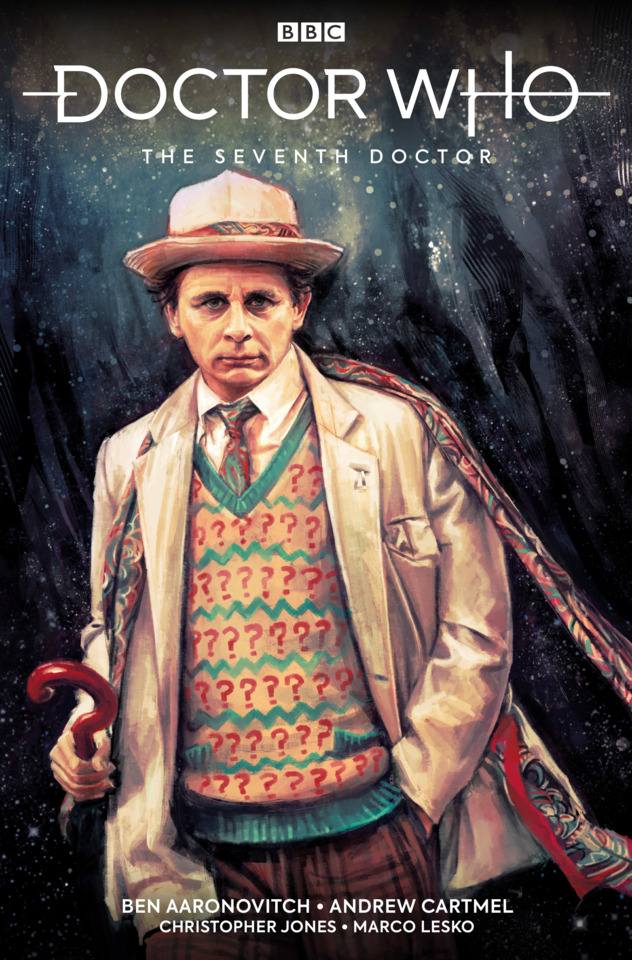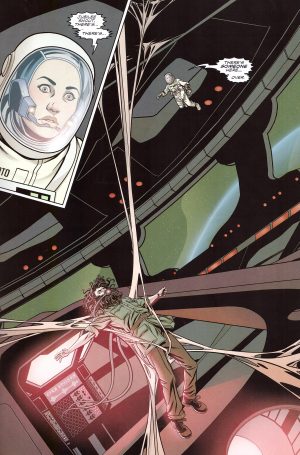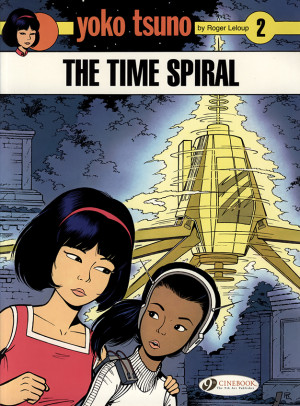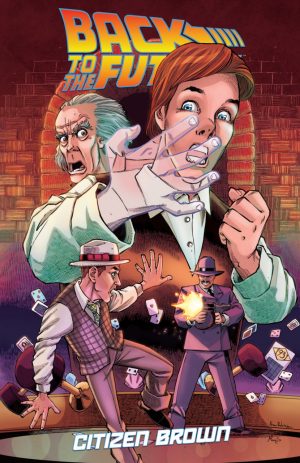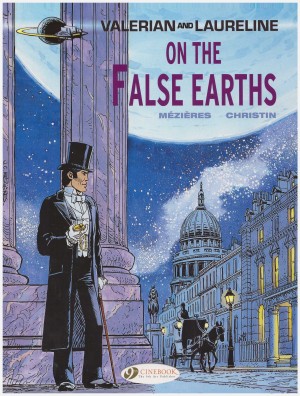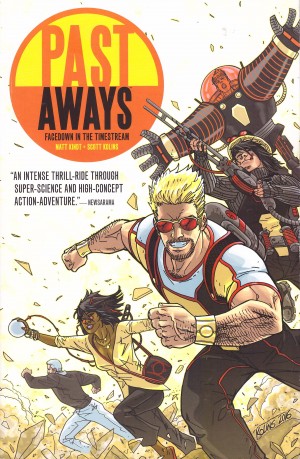Review by Karl Verhoven
Read the back cover blurb and there seems to be a lot of baggage associated with Operation Volcano, a new story about the seventh Doctor, the Sylvester McCoy version from the 1990s for those who don’t like to keep count. He worked his way through a lot of companions, and it’s noted that Ben Aaronovitch has lent his cast from ‘Remembrance of the Daleks’. Instead of co-writer as he is with Andrew Cartmel on the Rivers of London graphic novels, he’s listed as ‘Executive Producer’, and whatever that may mean, it’s enough to have his name first on the credits.
Unless you’re up on all that, in which case you can dive in anyway, the best advice is to forget most of it beyond what the Doctor is capable of, and then go with the flow because Operation Volcano is complex enough anyway. It begins by switching between 1967 and 2029, teasing with the revelation that the investigation of a UFO revealed by nuclear testing in the Australian desert seems to have dire consequences for one of those accompanying the Doctor. It’s a clever recurring narrative device as in increments we learn more about what’s resurfaced as we see the problem being dealt with in 1967. However, very little is what we first take it to be, in what’s a constantly engaging plot with some nice touches. The way the 1960s military officer contacts the Doctor is especially quaint. “It has a convenient hole in the wall behind it, into which I insert a copy of today’s newspaper”, explains Captain Gilmore, after which the Doctor immediately arrives.
Artist Christopher Jones has a very nice, clear style, ensuring what needs to be shown is prioritised, and embeds the cast in their locations without cluttering them too much. He also has a nice sense of scale, pulling the viewpoint back to show how far beyond normal some objects are. His weakness is motion, but as the full-on action scenes are kept to a minimum it doesn’t harm matters.
Three back-up strips round off the collection, and these provide a mixed bag. Richard Dimmock’s plot about a fascist dictator expanding his repression has its moments, but nice as it might be to have an actress who’s appeared in Doctor Who draw a strip, Jessica Martin has a very basic sense of how to lay out a page and what needs emphasising in panels. Jones draws John Freeman’s jokey script, and if you choose to see it that way, it could be the prelude to the main story, given the artistic consistency. Nice though it is, Paul Cornell and John Stokes’ final strip is a bit of a puzzle as it features the helpers of the earliest Doctor Who incarnation from the 1960s. Stokes’ baroque settings are beautiful, but his people inconsistent, sometimes stippled, sometimes not, sometimes meticulously recreated from reference, sometimes not and Cornell’s script intended to deceive, but leading to a strange pay-off.
At 75% of the page count it’s the title story providing the main feature, and it’s intelligent, humane and succeeds in presenting a more dignified version of the seventh Doctor than might be remembered from the TV show.
